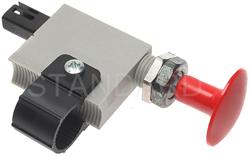Seems to me there were a few previous threads on wiring our cars... can't find them.
And I think Russ sent me a drawing, but that is long gone.
So how do we wire these cars?
What gauge wiring? Battery to emergency cutoff switch to ground???
Emergency cutoff switch in neg (ground) or positive?
I was going to use a relay to keep the thicker wires short, but the rules seem to say that the main wires have to go through the cutoff switch.
So - wiring is the next project on my car...
Citations usually have the cutoff switch on the dash with a pull cable in the usual place (right rear rollhoop) rigged to that cutoff switch. I haven't decided which way to go yet.
Thanks,
Rob




 Reply With Quote
Reply With Quote







